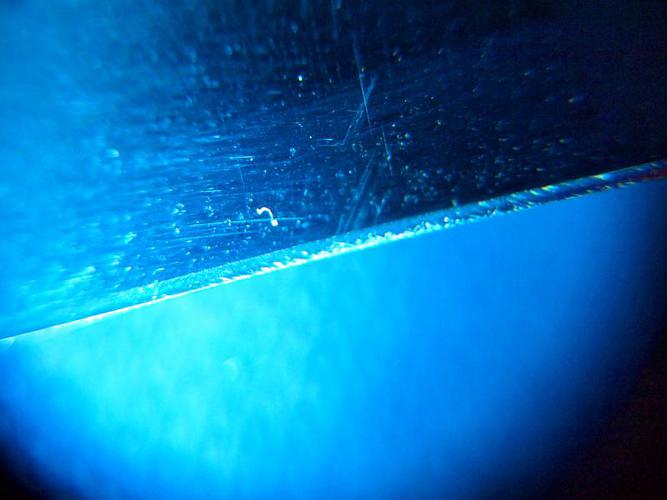Results 11 to 20 of 35
-
09-24-2014, 05:30 AM #11Senior Member



- Join Date
- Apr 2012
- Location
- Diamond Bar, CA
- Posts
- 6,553
Thanked: 3215
Your bevel is not set.
How do you know when the bevel is set?
Hair test are not reliable, because they cannot test the whole edge, they can be an indicator, but if it is not shaving, it’s not set.
You can buy a lighted 30X loupe for 2-3 dollars and remove all doubt.
-
09-25-2014, 01:33 PM #12Junior Member

- Join Date
- Mar 2011
- Posts
- 23
Thanked: 2
-
09-25-2014, 05:25 PM #13Senior Member



- Join Date
- Apr 2012
- Location
- Diamond Bar, CA
- Posts
- 6,553
Thanked: 3215
If the edge is breaking down, it usually is, the bevel was not “Completely” set, too much pressure or defect in the steel caused by Cell rot, aggressive low grit honing or too thin a grind angle.
Since you have shaved with the razor, I would suspect, the edge got wiped and was not completely re-set. When you hair tested, it cut hair on a part that was set, giving a false positive test.
Most problems of sharpness are probably due to the bevel set.
Develop an absolutely positive bevel set test technique, looking at the bevel straight down on the bevel with magnification is the quickest, complete test of the whole edge.
-
09-25-2014, 05:34 PM #14Senior Member

- Join Date
- Aug 2012
- Location
- Europe, Paris, Rome
- Posts
- 236
Thanked: 38
I have wiry beard and most razors of mine don't pass the HHT after shaving, unless I accurately strop them.
After seven years I assume that you manage correctly the whole honing process. Then I can think of 2 possibilities:
If those two razors are new entries and you never used before then you have probably met two blades with some softer steel.
If those are old blades that you had already used in the past and the behavior has changed, well be aware that your beard thickness and hardness are increasing with your age and are going to decrease in your latest years after 60-70, it's a natural evolution.
-
09-25-2014, 06:24 PM #15

And putting one more guess in the pool... If the razors are old ones, that you honed before, then sometimes that problem you describe can happen.
It's a known problem for the barbers of old.
The solution they used, was to shift hones, use another honing technique, or have another one hone the razor.
Apparently the problem was caused by a long use of the same hone or honing technique on the same edge.
If the razors are "new" old ones, then I agree with the other answers above.
-
09-27-2014, 09:13 PM #16Senior Member

- Join Date
- Feb 2014
- Location
- Eindhoven, The Netherlands
- Posts
- 235
Thanked: 24
i have 2 suggestions as well, I also hone using a coticule with the dulicut method, I use half strokes during a dulicut, not full X strokes
if you keep "diluting" your slurry to much you're basicly honing on water to long, which can result in a foil edge, resulting into the issues you've discribed
if the affliction turns out to be contagious and starts spreading to other razors in your collection it could be caused by some coticule garnet rolling around on your 'plain leather strop'
-
10-01-2014, 09:18 PM #17Junior Member

- Join Date
- Mar 2011
- Posts
- 23
Thanked: 2

Well this's what I found with the loupe, I'm not sure if their chips or scratches though. Anybody know? Is this just a portion of the blade where the bevel was not achieved? Do I need to hone more into the razor to remove this? Thanks for all the advice everyone so far.
-
10-01-2014, 09:38 PM #18Senior Member



- Join Date
- Apr 2012
- Location
- Diamond Bar, CA
- Posts
- 6,553
Thanked: 3215
You are not honing to the edge.
Ink the bevel and use a rolling X stroke.
-
10-22-2014, 11:26 PM #19Member

- Join Date
- Feb 2013
- Location
- Philadelphia
- Posts
- 53
Thanked: 2
why does nobody ever talk about bevels getting unset or that maybe a razor needs freshening up. You people act as if the bevel is literally set in stone.
-
10-23-2014, 01:42 AM #20


 37Likes
37Likes LinkBack URL
LinkBack URL About LinkBacks
About LinkBacks






 Reply With Quote
Reply With Quote


